Comparison of the performance for lenses with blackened and transparent/polished edges.
- PandaRoot simulations without field
- configuration with narrow bars, 3 layer spherical lens, and 8 MCPs layout with ~17 mm gap
- lenses with minimal thikness of each layer of 1.5, 2 (default) and 3 mm (corresponding thickness of whole lens are 13.36, 14.86, and 17.86 mm)
- Nlak33A, default radii = [95,50]; radii of the ordered lens prototype = [94.5,47.3]( see comparision)
- pions and kaons @ p = 3.5 GeV/c @ phi = 10.825 deg
- geometrical and time-imaging reconstruction with full-simulated pdfs
- 10M samples are used for the LUT generations
- 30k tracks for pdf generation (per each particle species); 1.5k for determining separation
- ~2 mrad tracking resolution
- realistic time precision
- QE=18(24)% ( black curve). CE=95%
- spatial QE = 1
Event display of lens (top view, between two lenses) with polished/transparent edges:
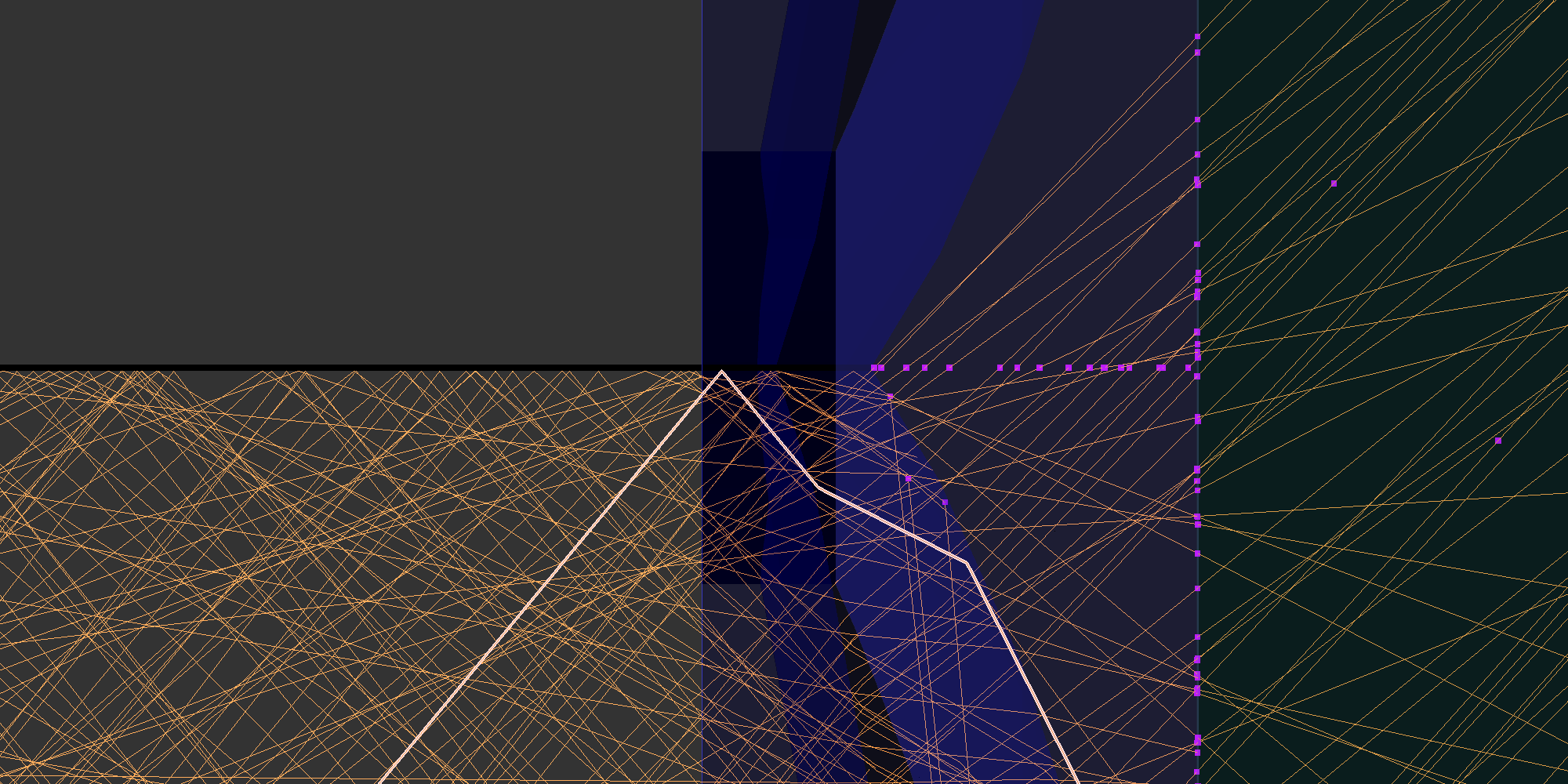
Event display of lens (top view, between two lenses) with transparent edges:
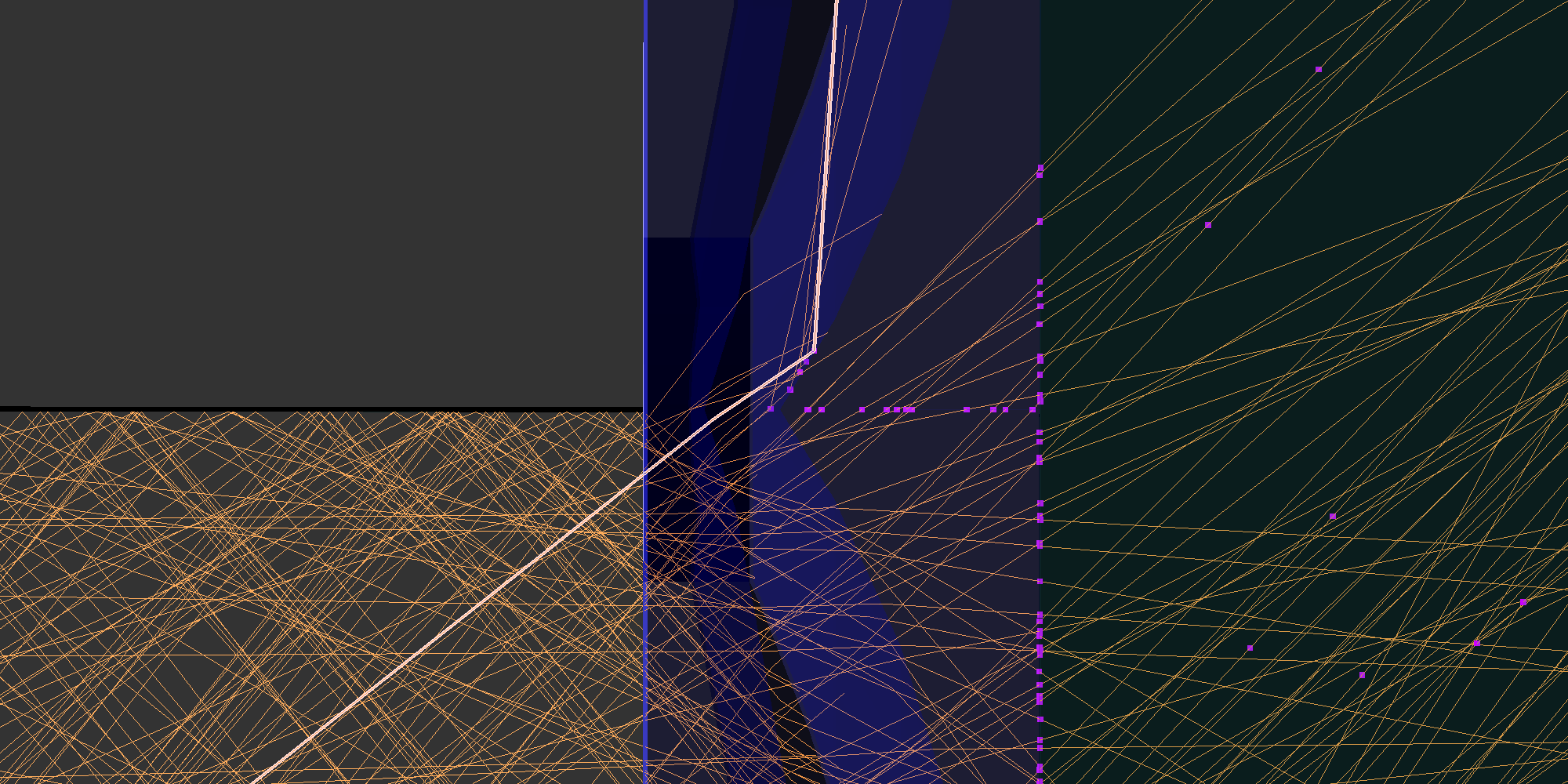
Edges of 1st and 2nd are blackened:
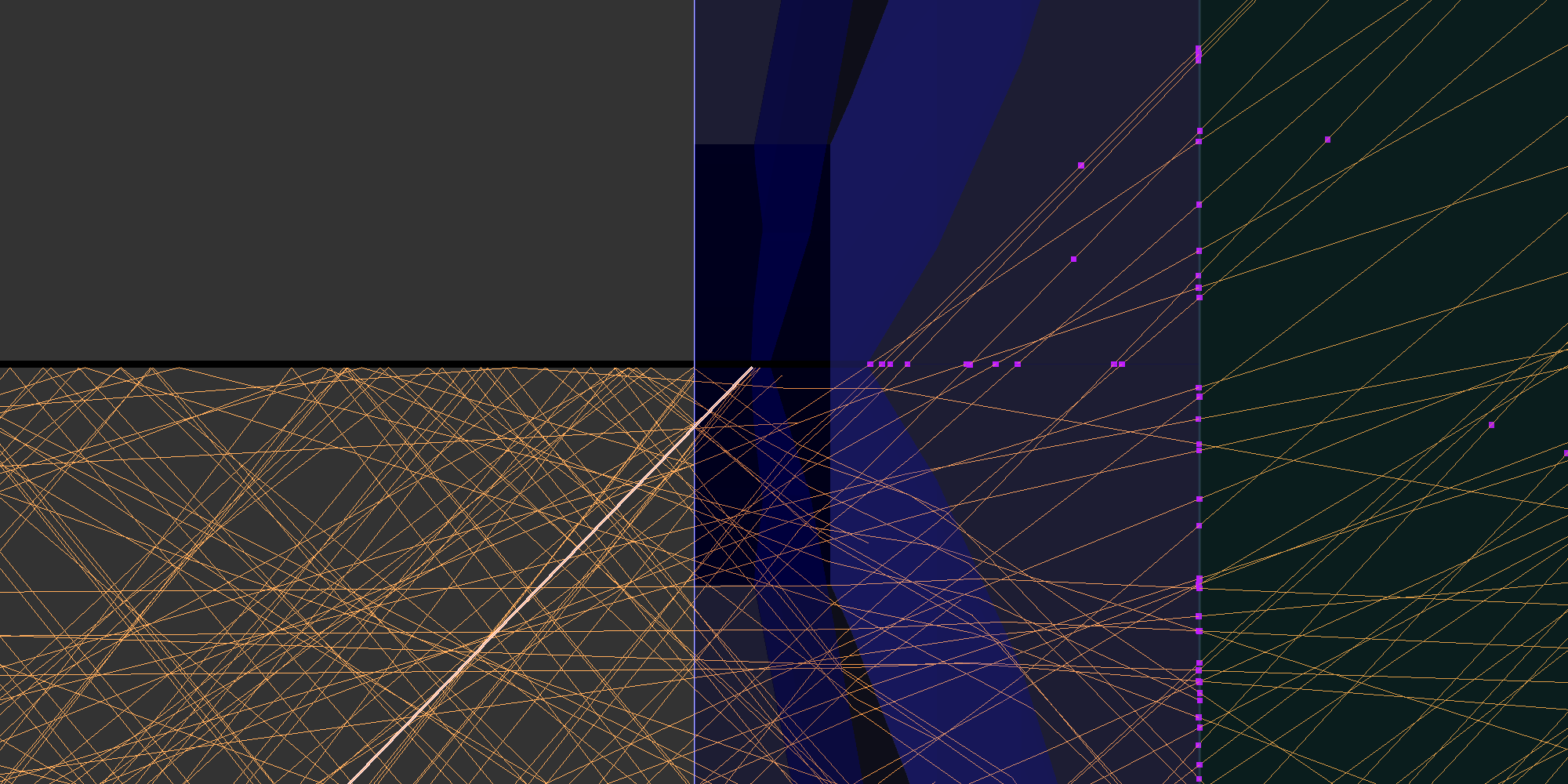
Edges of all lenses are blackened:
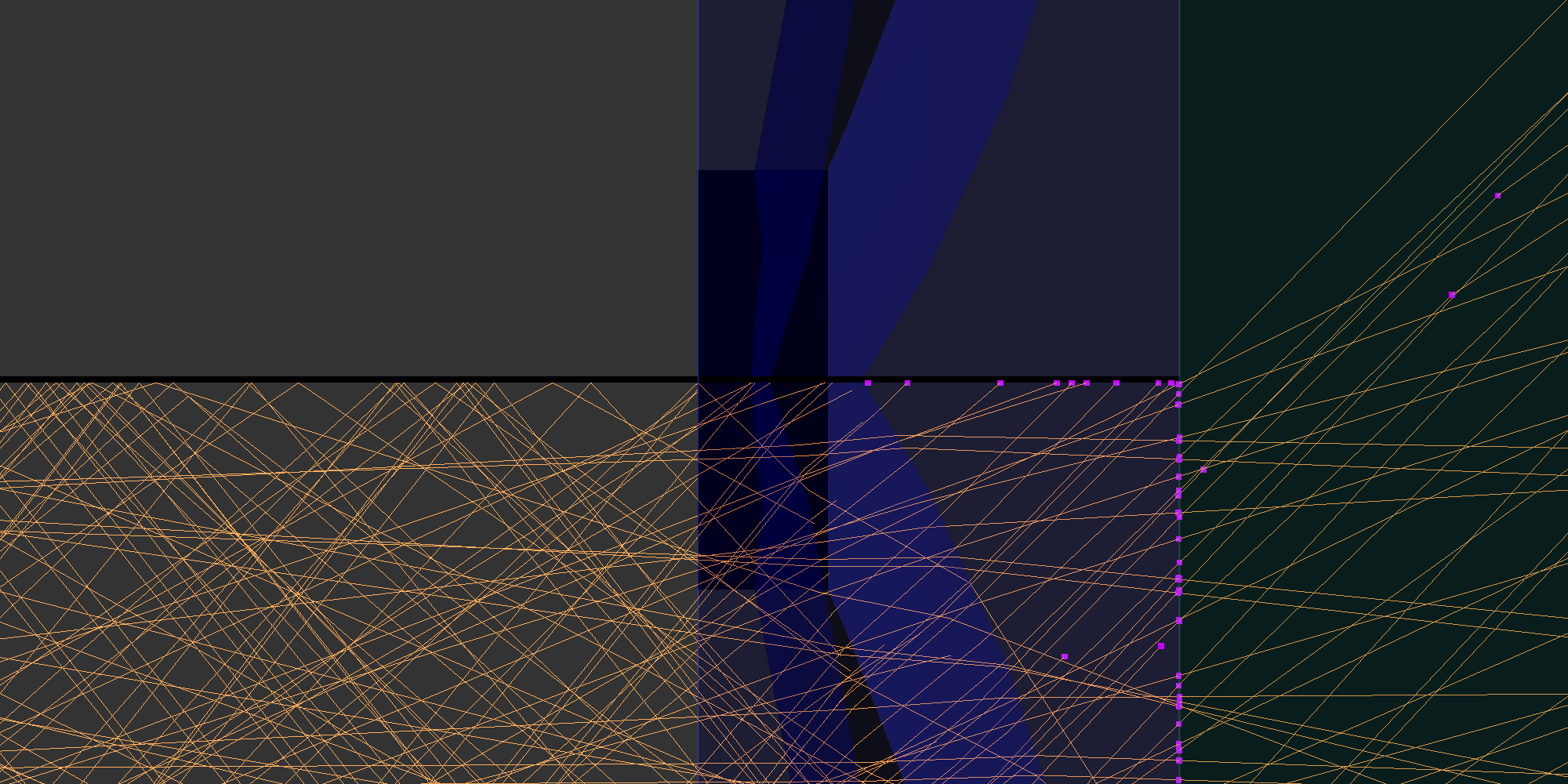
Performance as a function of polar angle:
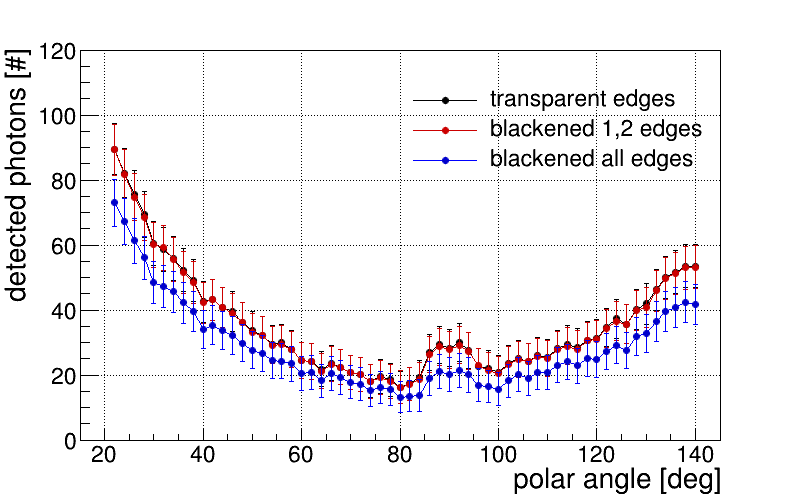
Geometrical reconstruction:

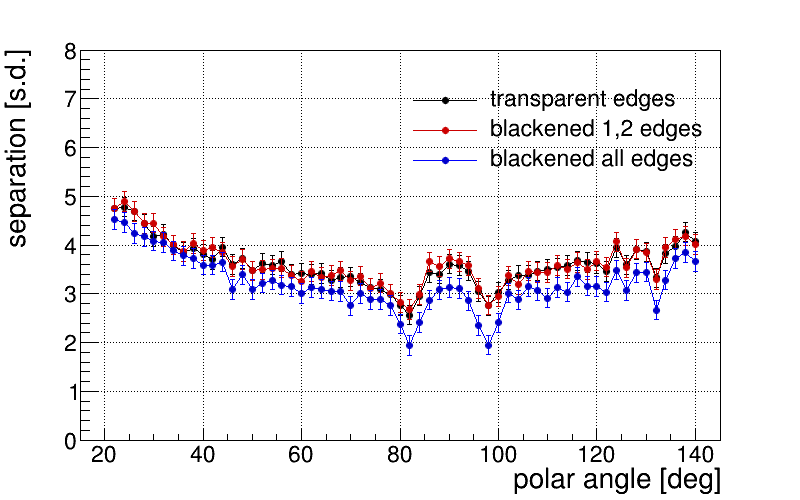
Time imaging:
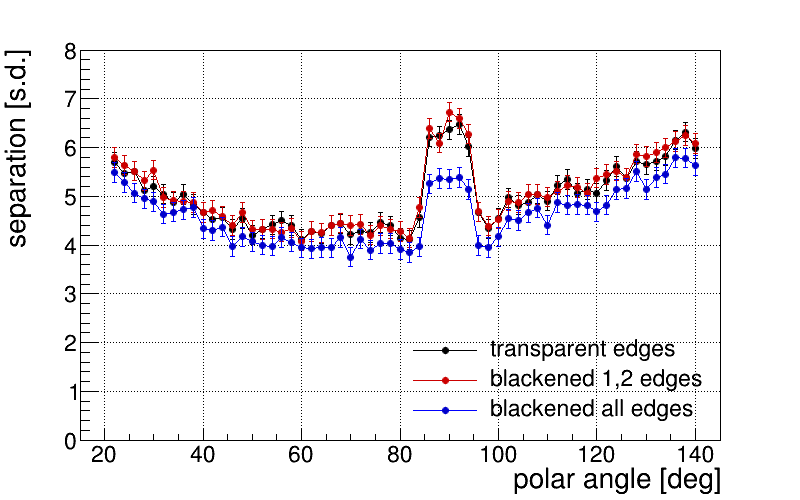
Reflected vs. transparent sides of the first 2 layer:

Geometrical reconstruction:

Time imaging:
